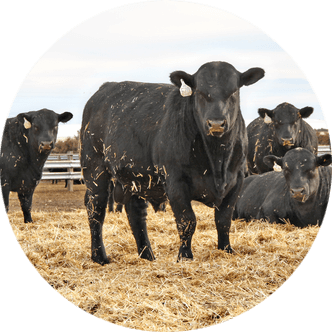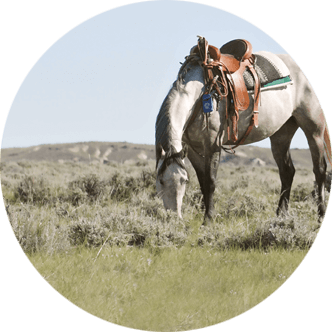UW Extension Education: Help Bees Overwinter in Wyoming
Around the world, raising bees and owning hives has exploded in popularity, especially with a focus on promoting pollinators. However, raising bees is not as easy as it might seem, and successfully overwintering bees in Wyoming is not for the faint of heart.
Due to the variability of weather conditions throughout the year and across the state, both new and experienced beekeepers struggle to successfully overwinter bee hives.
Supporting bee health, providing shelter with proper insulation and ventilation and monitoring and augmenting the food supply within the hive throughout winter months increases the chances of successfully overwintering bees in Wyoming.
Check for mites
A healthy colony is more likely to survive a Wyoming winter than one that is stressed.
When preparing hives for winter, it’s important to inspect hives regularly for Varroa mites.
When found in large populations within a hive, these external parasitic mites compromise the colony’s health and eventually lead to death of the hive. They can also be carriers of several viruses lethal to bees.
Testing for Varroa mites should be done frequently.
There are many methods to test for mites, including the alcohol wash method, which tests for the percentage of adult bees with mites, and the sticky board method, which estimates the total number of mites in the hive.
Regardless of the testing method, if three to five mites per 100 bees are found, intervention and control is highly recommended.
Periodic checks should occur after initial treatment to assess control.
An integrated approach, meaning the use of more than one method, to control Varroa mites is best to prevent resistance and may be more effective.
Methods may include mechanical control, which involves management practices like using screened bottom boards, drone-brood trapping and inert dusts. The use of biopesticides – naturally occurring organisms or their byproducts – has gained popularity over the use of conventional chemical control – synthetic pesticides.
Provide shelter
Prepare an area to protect the hives from winter weather. Location is the key.
Select a site providing shelter from prevailing winds and protected from direct rain and snow.
It may be difficult to find an ideal location that protects the hive from the elements. Therefore, a wintering shed, unused shop or garage or three-sided structure may be considered.
This structure should allow the hive to be on stands and off of the ground, have enough space around the hive to support air circulation and allow bees to come and go throughout the year when temperatures – including the wind chill factor – are above 55 degrees Fahrenheit.
Insulate and ventilate
Consider insulating hives by first reducing excess space. Removing honey supers and any empty frames minimizes the amount of space bees need to heat over winter months. It also reduces the amount of energy bees use to produce this heat.
Adding insulation such as foam insulation boards, winter wraps or dry insulation on top of and around hives, also reduces heat loss during the winter. The amount of insulation should be adjusted based on weather conditions and colony needs.
Be aware, over-insulation or improper insulation may trap excess moisture, which may cause undesirable outcomes such as disease outbreaks.
When insulating hives, it is important to keep the entrance area open for ventilation, as bees may still be active on warmer days. However, reducing the entrance size is recommended to prevent excess heat loss and reduce the likelihood of other organisms, such as mice, entering the hive and causing havoc.
Proper ventilation also prevents moisture accumulation. Excess moisture can lead to diseases such as Nosema, which is caused by microscopic, single-celled parasites closely related to fungi.
Ensure sufficient
food stores
Providing sufficient food stores is another crucial factor in successfully overwintering bees in Wyoming.
It is a good rule of thumb to keep at least 20 to 25 pounds or more of honey per colony in each hive to feed bees during winter months.
Winter may last longer and can be more severe in some parts of Wyoming than others, so it is a good idea to check in on bees and assess their food source periodically throughout the winter, especially starting around February.
To complete a check, wait for a warmer day, open the hive quickly and remove the telescoping cover and/or quilt box if present, making sure not to remove individual frames from the boxes.
Then, locate the bees. If they are near the top of the hive, one may need to add a food source to get them through the rest of the winter and into spring.
A plentiful food source in February and March is critical to hive health, as the queen increases egg laying during this time and there is an increased food demand, which depletes food sources quickly.
Seek advice
For individuals who are new to beekeeping or new to beekeeping in Wyoming, it is always beneficial to contact local beekeepers from the area, as they may be able to provide tips for successful overwintering practices for specific regions.
In addition, it is important to note the Wyoming Department of Agriculture (WDA) regulates state statutes, rules and regulations on beekeeping and apiaries within Wyoming.
Apiary registration and inspection information can be found on WDA’s Statutes, Rules and Regulations page at bit.ly/wda-rules.
Although overwintering bees can be a challenge in Wyoming’s unique climate, the guidelines provided here should help bees successfully overwinter and flourish the following year.
Amy Smith is a UW Extension educator based in Goshen County and a co-organizer of the annual Wyoming Bee College. She can be reached at asmit207@uwyo.edu or 307-532-2436.





